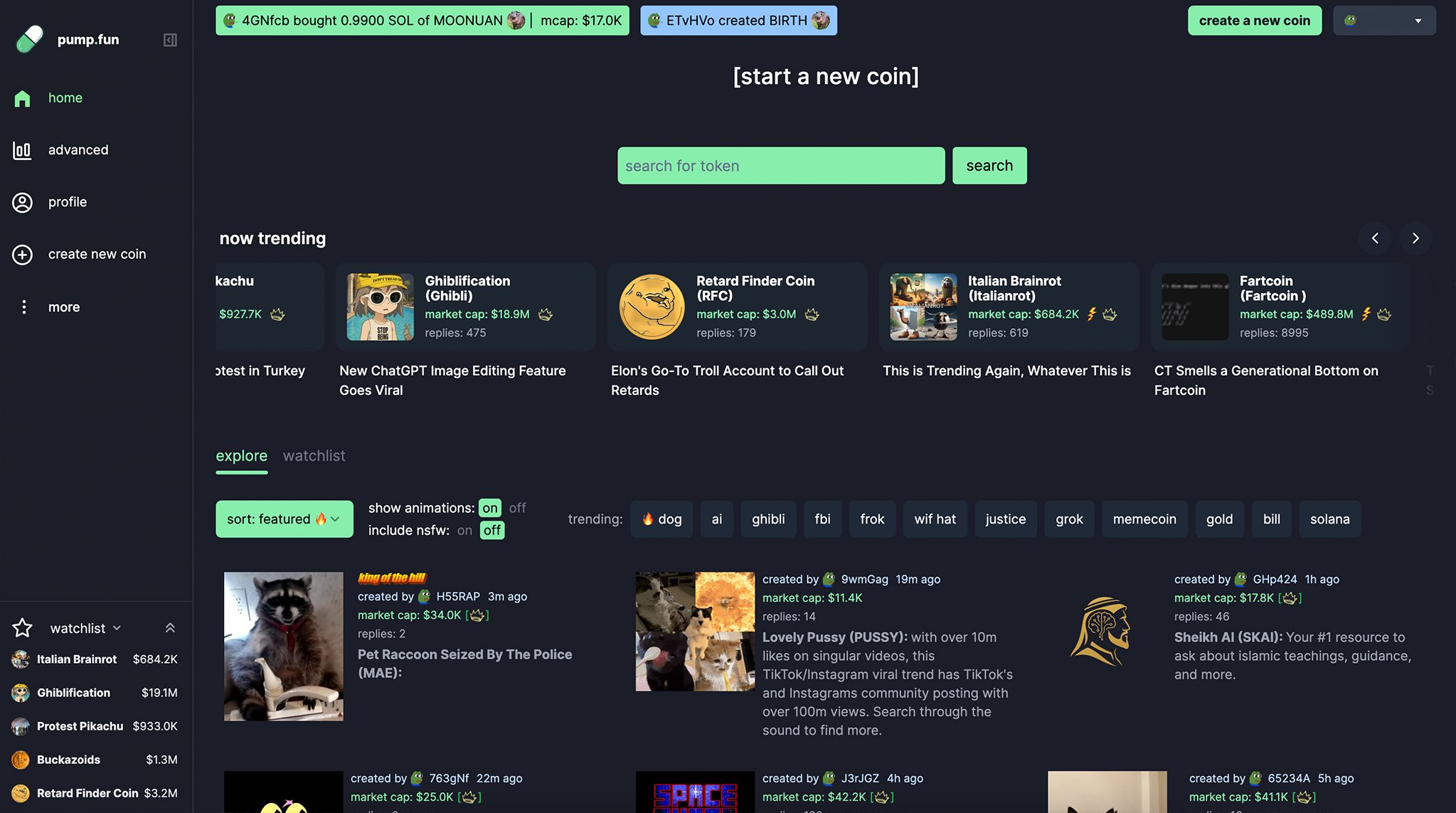Pump.fun announces 50% Revenue Sharing for Memecoin Creators
In a groundbreaking move that could reshape the economics of the memecoin landscape, Pump.fun—Solana's leading memecoin launchpad—announced today the launch of its "Creator Revenue Sharing" mechanism. The new feature promises to return 50% of all trading fees to token creators, potentially transforming the incentive structures that have plagued the volatile memecoin market with rampant token dumps and rug pulls.
CREATOR REVENUE SHARING is finally here!!!
— pump.fun (@pumpdotfun) May 12, 2025
50% of PumpSwap Revenue is now shared with Coin Creators 🤯🤯🤯
create a coin and start earning every time someone places a trade NOW
continue reading to learn more pic.twitter.com/XmdpFdIUhV
A New Era for Memecoin Economics
Starting May 12, 2025, creators of tokens on the Pump.fun platform will earn 0.05% in SOL rewards each time its token is traded. This passive income stream means creators no longer need to rely solely on selling their token allocations to profit from their projects—a fundamental shift in how memecoin creators monetize their work.
"With $10,000,000 in trading volume, creators can earn $5,000," Pump.fun announced in their official statement, positioning themselves as "the most rewarding launchpad for creators BY FAR."
The revenue-sharing mechanism applies automatically to all eligible tokens, including:
- Newly created tokens
- Tokens are still trading on the Pump.fun bonding curve
- Tokens that have graduated to PumpSwap, the platform's native DEX
Claiming On-Chain Rewards
The process for claiming rewards has been designed for simplicity and transparency. Creators can:
- Log in to Pump.fun with the wallet used to create their coins
- Navigate to their profile
- Access the "coins" section
- Claim SOL rewards instantly
All transactions are executed on-chain, ensuring complete transparency and immediate access to earned rewards. Creators can claim their rewards as frequently as desired, with no minimum threshold or time restrictions.
Addressing the Rug Pull Epidemic
This revenue-sharing model directly tackles one of the most persistent problems in the memecoin space, the incentive for creators to "rug pull" their projects. Until now, creators primarily earned by selling large token allocations once their project gained traction, often leaving investors with worthless tokens.
The phenomenon became so widespread that even minors have been involved in high-profile rug pulls on the platform. By providing creators with ongoing revenue tied to trading activity, Pump.fun creates a powerful financial incentive for long-term project support and development.
"With revenue sharing, creators can earn throughout the token's lifecycle—even into maturity," industry observers note. "This incentivizes them to stick around longer and take actions that actively boost the token's price and trading volume."
Pump.fun's Dominant Position in the Solana Ecosystem
This strategic move comes as Pump.fun continues to cement its position as a powerhouse in the Solana ecosystem. Since its January 2024 debut, the platform has facilitated an astonishing $22.3 billion in trading volume in 2025 alone, accounting for 2.8% of all protocol volume on Solana.
Even more impressive is the platform's dominance in transaction count. In November 2024, Pump.fun accounted for 62% of all Solana transactions, surpassing established DEXs like Jupiter and Orca.
The platform's March 2025 launch of PumpSwap eliminated migration fees and provided instant on-chain trading pools, rapidly capturing market share from Raydium. While Raydium still processes around $517 million in daily trading volume, PumpSwap reached $80 million daily volume just two months after launch, according to industry data.
Competition Heating Up Among Solana DEXs
The revenue-sharing initiative arrives amid intensifying competition between Solana-based memecoin launchpads. Raydium's LaunchLab, offering customizable bonding curves and liquidity incentives, presents a direct challenge to Pump.fun's integrated model.
This competitive landscape has driven innovation, with Pump.fun's aggressive creator incentives potentially shifting trading patterns and accelerating platform competition across the Solana ecosystem.
Pump.fun has demonstrated remarkable growth throughout 2025, generating approximately $296 million in transaction fees year-to-date, outperforming Ethereum's $249 million during the same period. Despite experiencing a slowdown in March, platform activity has rebounded strongly in May, with daily revenues between $1 million and $2 million.
Mechanics of the New Revenue Model
Understanding the detailed mechanics of the new system provides insight into its potential impact:
- PumpSwap traditionally charged a 0.25% fee per transaction, with 0.20% going to liquidity providers and 0.05% to the protocol
- Under the new scheme, 50% of that 0.05% protocol fee (equating to 0.025% of each trade) is automatically credited to token creators in SOL
- This effectively provides creators with 0.05% of the total trade volume when calculated across the entire fee pool
- All eligible projects active on either curve or DEX by the announcement date automatically begin accruing revenue share
Potential Challenges and Future Outlook
While the revenue-sharing model presents promising solutions to longstanding issues, several challenges remain:
-
Revenue Sustainability: With memecoin market sentiment cooling, Pump.fun's fee revenue reportedly fell 95% from February to March 2025—maintaining sufficient fee pools for meaningful sharing may require renewed trading interest.
-
Creator Behavior: While revenue sharing disincentivizes dumps, enforcement against malicious code or front-running requires robust auditing systems.
-
Regulatory Scrutiny: Legal actions, including the reported Burwick lawsuit related to harmful content and investor losses, underscore ongoing reputational risks for the platform.
Pump.fun's 50% revenue-sharing initiative represents a bold evolution in memecoin economics that could potentially set a new standard for token launchpads across all blockchain ecosystems. By aligning creator incentives with long-term project health, the model aims to mature a sector that has been plagued by short-term thinking and exploitative practices.
As the crypto community watches closely, the success of this model will ultimately depend on its ability to revive trading volumes, navigate regulatory challenges, and establish sustainable patterns of creator engagement in the rapidly evolving memecoin landscape.






No comments